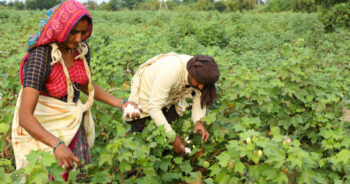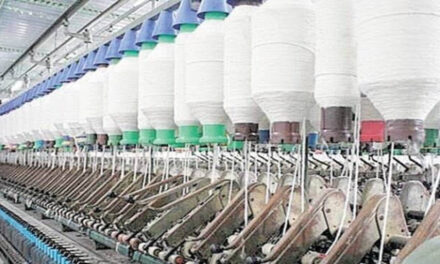 After recording the lowest ever production in the last 15 years at 29.41 million bales in the 2023-24 season, in 2024, the cotton crop sowing is projected to drop by almost 10 percent due to falling yields and low price realization. Cotton marketing season runs from October to September, and the crop is largely cultivated during the kharif season after the advent of monsoons. The 2023–24 season was the lowest production of cotton in the previous fifteen years, with 29.41 million bales produced.
After recording the lowest ever production in the last 15 years at 29.41 million bales in the 2023-24 season, in 2024, the cotton crop sowing is projected to drop by almost 10 percent due to falling yields and low price realization. Cotton marketing season runs from October to September, and the crop is largely cultivated during the kharif season after the advent of monsoons. The 2023–24 season was the lowest production of cotton in the previous fifteen years, with 29.41 million bales produced.
The following year may not be too promising for the crop, with an approximate 10% decrease in planting expected overall due to declining yields and low price realization. The cotton crop is mostly grown during the kharif season following the arrival of the monsoons, and the marketing season for the crop extends from October to September.
According to government data, the amount of land used to plant cotton during the 2023 kharif season was approximately 12.38 million hectares, a decrease of more than 3% from the year before. This year (2023–24), cotton sowing has already decreased by an average of 18%. Sector people are worried that if the sowing decreases, their cotton production may go down even further.
According to the most recent crop committee report from CAI, India’s cotton production in 2023–24 is predicted to be 8.6% lower than in 2022–23 at 29.4 million bales (1 bale=170 kg), the lowest level in 15 years. How to boost domestic production is the largest issue facing the Indian cotton business right now, according to Ganatra.
According to him, 12.5 million hectares, or around 38%, of the 33 million hectares of cotton land worldwide are in India. However, the world’s average output is over 675 kg of lint per hectare, which is nearly 41 percent less, than its meager yield of just 396 lint per hectare, or 2.22 bales.
Besides, the main reason for this reduction in cotton yield is that the BT seed technology is very old. Climate change and the El Niño effect are also hurting India’s cotton crop in a big way. India’s cotton yields per hectare reached a peak of 572 kg in 2013–14; however, because technology has not advanced since then, yields have decreased by about thirty percent.
According to the analysis by CAI, the Indian textile sector would need about 41.4 million cotton bales annually if it operates at full capacity, but current domestic production is only about 29.4 million bales.
However, the world’s average output is over 675 kg of lint per hectare, which is nearly 41 percent less, than its meager yield of just 396 lint per hectare, or 2.22 bales.










